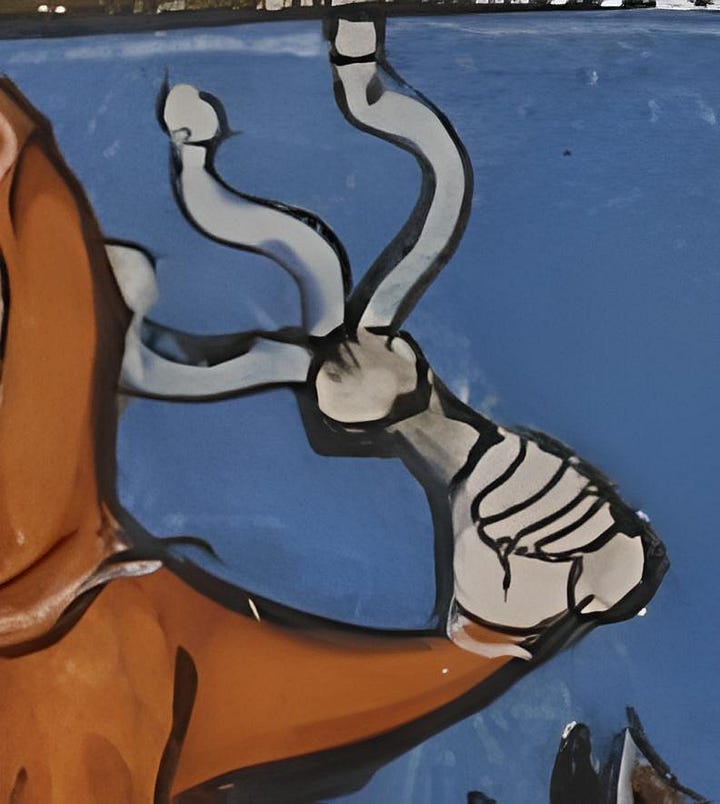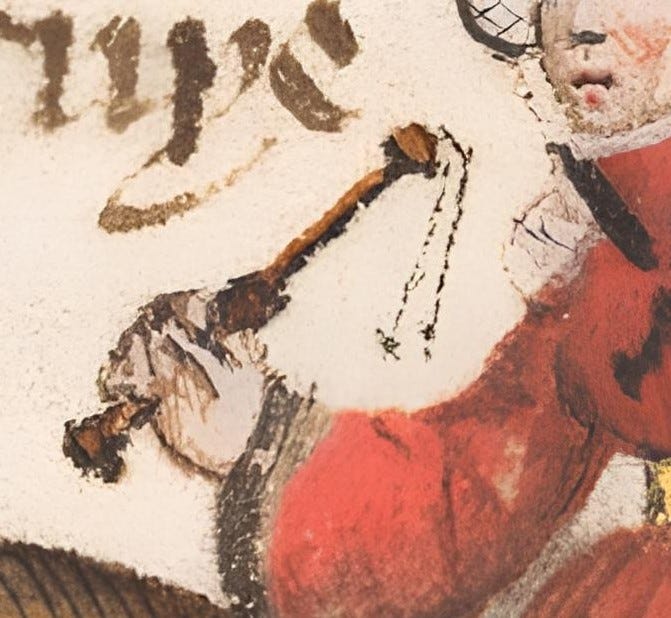Forget the sleek, single-tailed riding crops of today—medieval riding whips were a completely different beast. The “flagellum” or “scourge” had a long history as a tool for corporal punishment and religious self-mortification, but in the Middle Ages it was also appropriated as a riding whip.
Join me as we dive into the fascinating history of these forgotten tools, and why they deserve a comeback in our understanding of our equestrian past.
Riders with flagellums, BNF Français 25516, fol. 54r (c. 1280)
The Flagellum in Ancient History
The Roman flagellum, or flagrum, was a short whip made from 2 or 3 leather or rope thongs attached to a handle. Used as a form of punishment, the thongs sometimes had pieces of metal, bone, or bronze attached to them, making them even more deadly. A denarius coin from 113 BC shows a gladiator wielding a similar type of whip.
Denarius of T. Deidius, 113/112 BC.
The Middle Ages
In the medieval period, the flagellum was a popular tool for religious self-mortification. Flagellants, members of a Christian movement, scourged themselves with these types of whips as a form of penitence. In modern-day Italy and Spain Flagellants still use a form of flagellum known as a “discipline”.
Woodcut of flagellants (Nuremberg Chronicle, 1493)
The flagellum in equestrianism
Despite its associations with corporal punishment and religious penitence, the flagellum was also popular with medieval equestrians as a riding whip. Images of its use on horseback can be found in many sources including Chaucer’s Canterbury Tales in which the Wife of Bath rides holding a flagellum.
Wife of Bath, MS EL 26 C 9, fol. 72ʳ (c. 1400)
A close-up view of these types of riding whips shows they had short handles, probably made from wood or leather, with a butt at either end so that they didn’t slip from the rider’s hand. The thongs would have been made from leather or knotted cord.


By the Renaissance period the flagellum appears to have largely fallen out of use as a regular riding whip. Equestrian images like the one below now depict the use of long, semi-flexible types of whips like the ones we use today.
William Cavendish, British Museum, SL,5236.112 (c. 1650)
Decline of the riding flagellum
Why did the flagellum become less popular? The decline in its use can perhaps be attributed to the development of horsemanship as an art during the Renaissance. This period marked the beginning of a more formalised approach to training horses, heavily influenced by the revival of classical texts. A long, slender whip became favoured for its ability to provide gentle, precise cues to encourage the horse to move forward, laterally, or to correct minor behavioural issues. Additionally, it allowed riders to use the whip without taking a hand off the reins, enhancing control and communication with the horse.
Conclusion
The flagellum, or scourge, was put to many purposes, including as a medieval riding goad. It gradually fell out of favour due to the Renaissance's more refined approach to horsemanship. This revolutionised riding techniques, favouring more precise and versatile tools, and marked the end of the flagellum's use as a riding whip, paving the way for modern equestrian practices.








